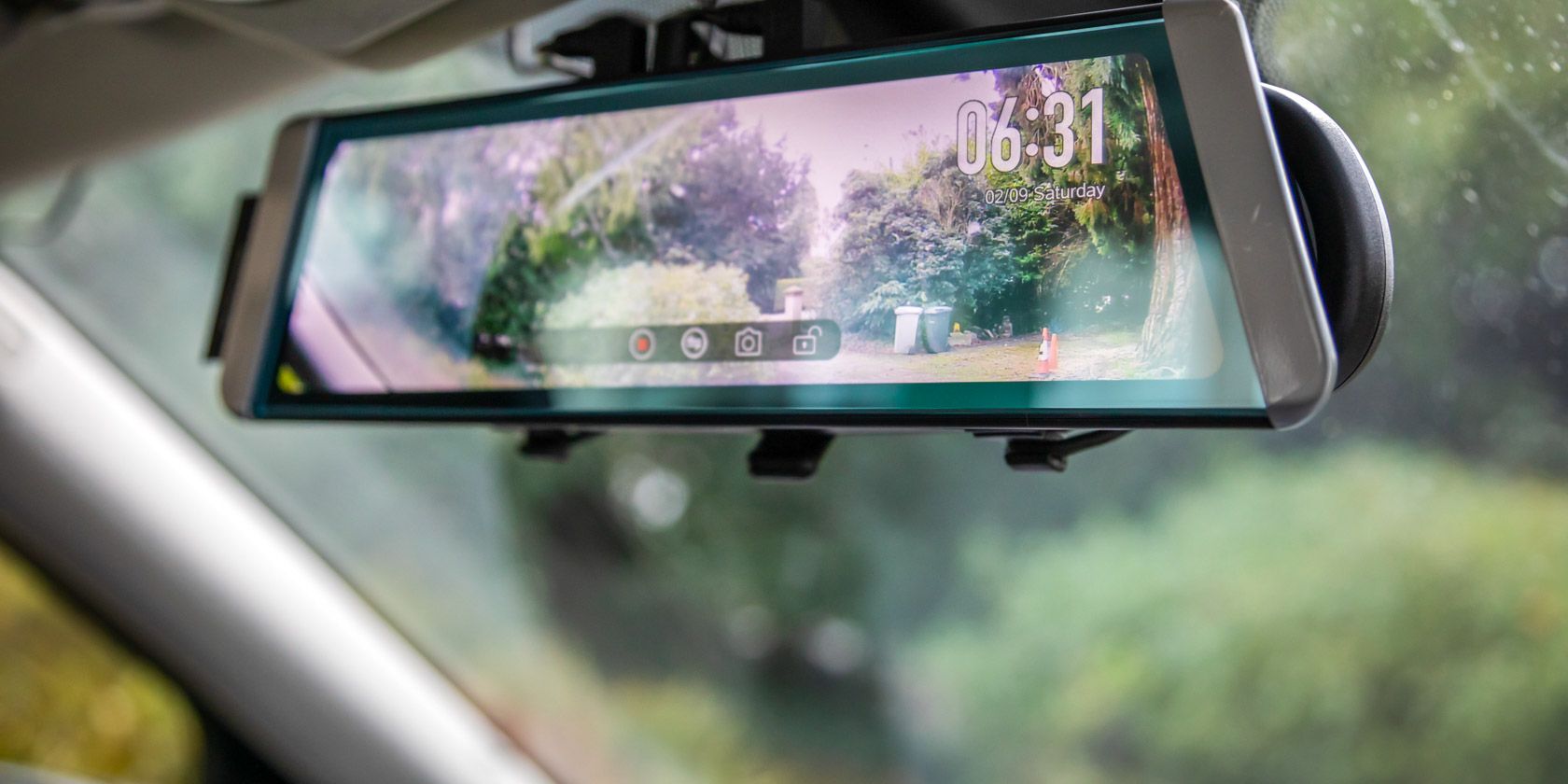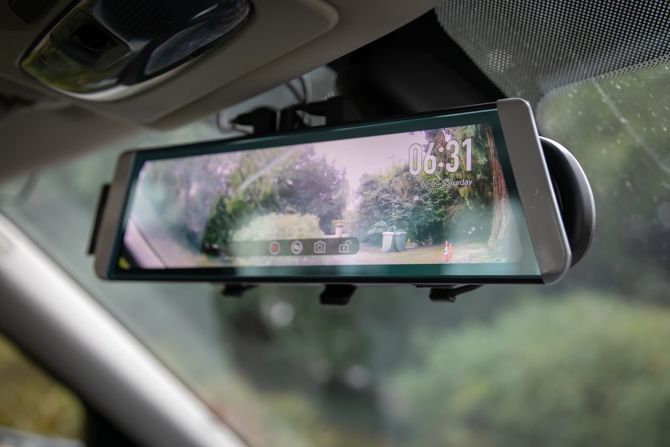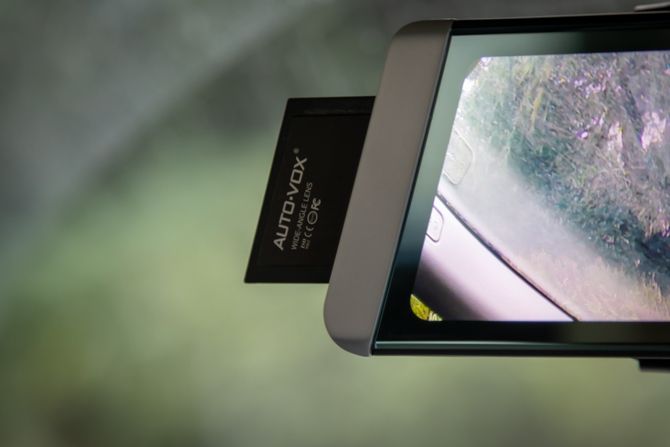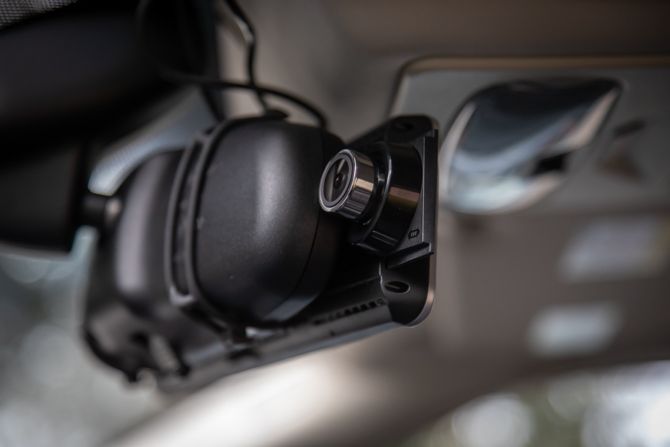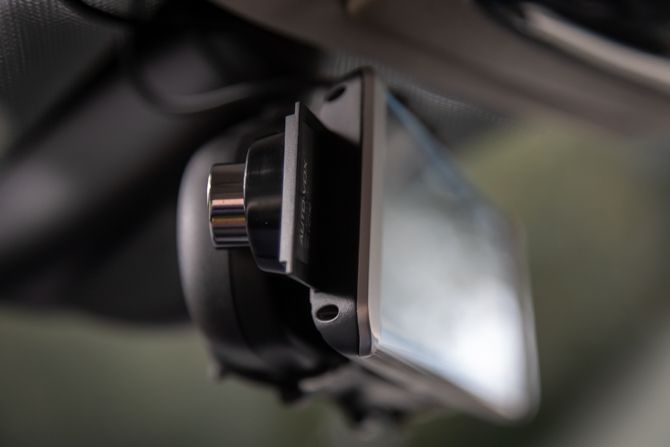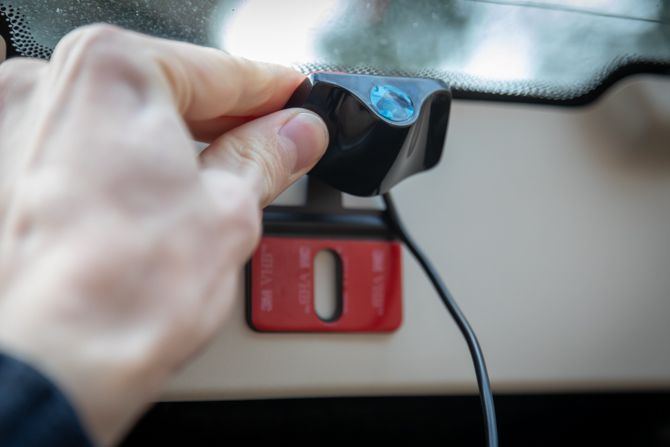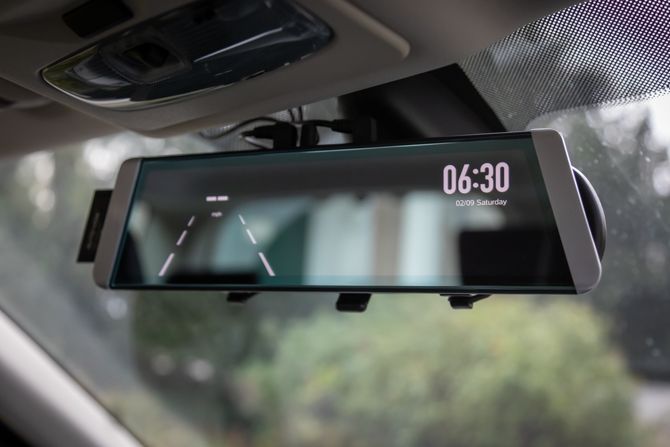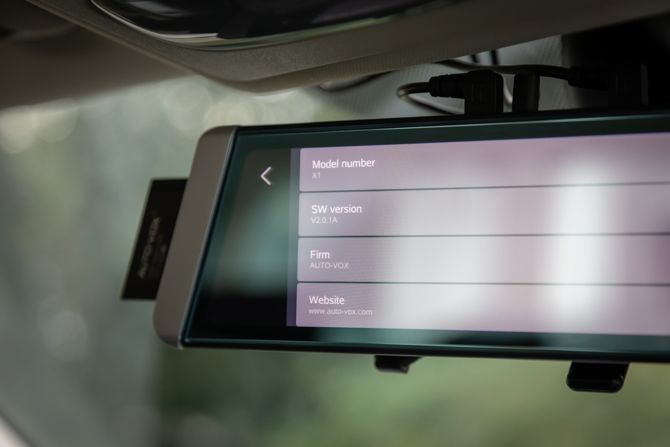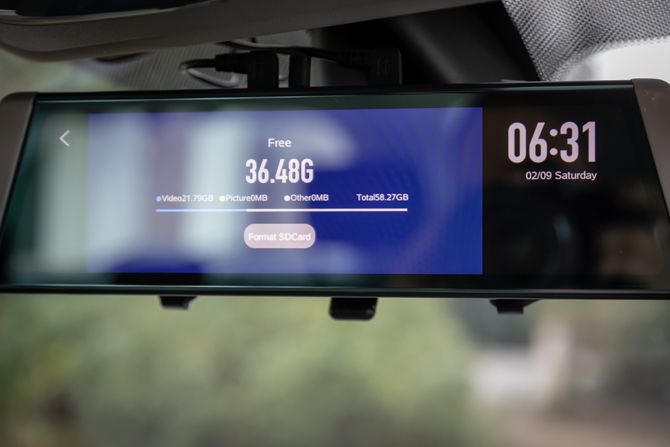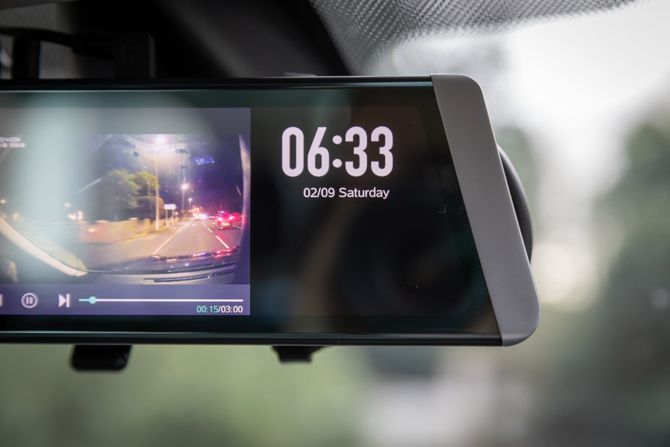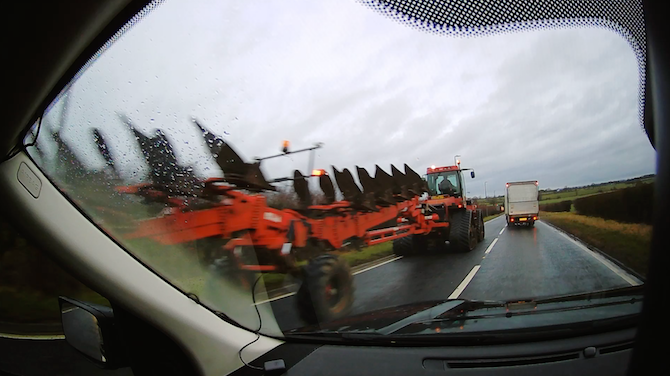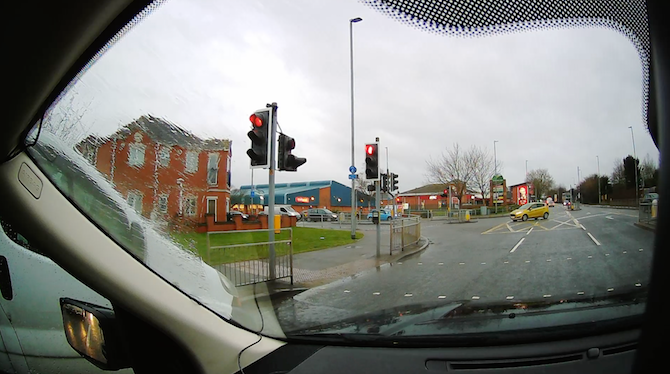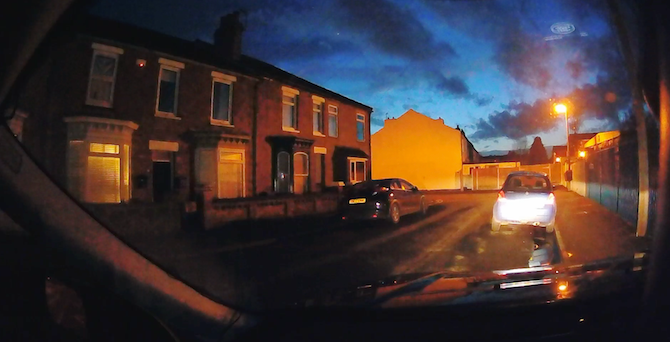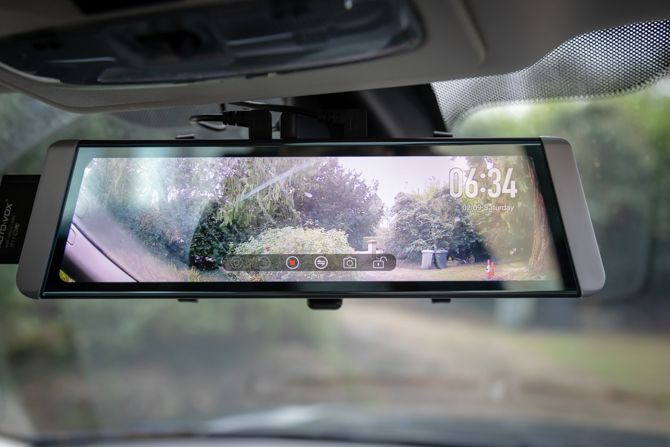Auto-Vox X1
An excellent dash camera. With superb image quality, easy installation, rearview camera, and a massive touchscreen, there's a lot to like. The X1 isn't the most affordable camera, however.
The X1 is the newest dashcam from Auto-Vox. It sports a massive 9.88-inch touchscreen which replaces your rearview mirror. With dual cameras, a lane departure warning system, full-color display, and much more, let's see if it's worth the $250 price tag.
At the end of this review, we're giving away a brand new Auto-Vox X1 dash camera to one lucky reader.
Features and Design
The X1 looks almost exactly like your car rearview mirror. It's roughly ten inches wide, and three inches tall. The front-facing camera is part of this main control unit, and it slides horizontally to ensure an unobstructed view of the road. The wide field of view ensures it will always capture anything you encounter on the roads.
The X1 receives power through the included car charger, which connects directly to your cigarette lighter socket. The rear camera connects through the included camera connection cable, which you'll need to install into your car.
During normal operation of your car, the X1 records every moment but leaves the display off. The highly reflective screen allows you to see what's going on behind your car, which is essential as this display covers your original rearview mirror. While it's legal to drive without a rearview mirror in many states, it's not wise, so you won't encounter any problems with this camera.
The X1 dashcam features:
- 1296P full HD front camera
- 720P rear camera
- 9.88-inch full view touchscreen
- GPS tracking
- Lane departure warning system
- Night vision
- Parking mode
- Smart reverse angle switch with guides
All the cables for power, GPS, and the rear camera connect to the top of the unit. The MicroSD slot is here as well, but you'll need to supply your own memory card, as one is not included. It's also worth noting that the right angle cable for the power blocks access to the MicroSD card slot. You'll, therefore, need to remove a cable to add or remove memory cards.
GPS tracking works through the included GPS module. This simple connects to the main controller through the included cable. Once installed, all the captured video gets GPS location data embedded into it.
The reversing mode shows two parking assist lines, overlaid on the video feed from the rear camera. By wiring a sensor cable into your reversing light, the X1 is smart enough to detect when you change into reverse gear. This sensor cable is part of the combined data and power cable for the rear camera. You don't have to connect this cable if you'd prefer not to, and you only lose the parking assist functionality if you don't wire it in.
Finally, the X1 features a parking mode. This continually records the video feeds when parked with the engine off. To use this, however, you'll need to purchase the optional fuse box connection kit, which ensures the camera has power even if your car ignition is off.
Ease of Installation
The X1 installation comprises of several simple steps. I was up and running with the X1 in exactly one hour. The install time for you will be similar, barring any surprises with your make and model of car.
The first step is installing the combined front camera and control unit. This clips over your rearview mirror, and is securely held on with two elastic clips.
Next, you'll need to run the power cable from this control unit to your car's cigarette lighter socket. Where this is will depend on your car, but the cable is plenty long enough for almost all possible scenarios.
The rear camera attaches to your number plate, boot, or any surface with a suitable view out the back of the car. The included sticky pad is strong enough to securely mount the camera, but not so strong as to ruin your car should you ever remove the camera. This camera also has a very long cable to route back to the front control unit.
As discussed above, the rear camera cable includes a signal cable to connect to your reverse light. This ensures the X1 knows when you enter reverse. I was unable to install this on my car, as it has a modern self-contained rear light cluster, which requires complete removal to even change a bulb. Again, the make and model of your car may differ.
Finally, you should hide all the cables inside the headlining of your car. For most models, this is a simple job, with a small seal running parallel to the edges of your windscreen. If you don't feel confident doing this, most mechanics would be happy to do so for a minimal fee.
Ease of Use
Like may dash cameras, the Auto-Vox X1 is incredibly simple to use. Once installed, and a suitable memory card inserted, the X1 handles everything else needed in the course of general day to day driving. By switching on the ignition of your car, the X1 turns on. Since it's powered from the cigarette lighter socket, it will always turn on whenever power your car ignition switches on. Once on, it automatically records the feeds from both cameras.
The default view shows your speed, lane assist guides, time, and direction. This can be distracting, so after one minute (or by pressing a button on the rear of the unit), the display switches off, and you're left with an unobstructed mirror view out of your rear windscreen. To the untrained eye, it looks and works exactly as a rearview mirror should.
The only downside to using this display as a mirror is you lose the dimming function built into most mirrors. When driving at night, bright headlights behind you can often be dazzling in your mirror. To counter this, almost all cars have some form of dimming. Either manually and automatically, adjusting the angle of the mirror greatly reduces the brightness of objects in the rear mirror.
To get around this, Auto-Vox has designed the X1 mirror to have a slight blue tint. While this isn't as effective as the traditional mirror dimming ability, it does a reasonable job and means you don't have to avoid this product for fear of getting blinded by other drivers at night.
It's possible to configure the X1 using the built-in touchscreen. It's not recommended to do this while driving, but the X1 won't stop you if you choose to do so. The simple interface makes it easy to change settings, view the front or rear camera feed, format the memory card, and more. When viewing the front camera feed, you can touch the screen to move the video feed around, to get a better view. Although this makes no difference to the recorded image.
Videos get recorded in one, two, or three-minute chunks. Once the card fills up, the loop recording automatically deletes video clips, starting with the oldest. You can "lock" files by pressing a button on the dashboard: this will ensure they aren't overwritten. Similarly, if the camera detects a large shock, such as would happen in a collision, it automatically locks the current file.
Image Quality
The image quality from the X1 is surprising. Sure, it can't compete with a modern DSLR or smartphone, but it doesn't need to. All a dash cam needs to do is provide a clear image of events, which the X1 can do admirably.
Despite attaching to your mirror, the wide field of view for the front camera ensures anything you can see gets recorded. The image is perfectly clear enough to make out what happened in the event of a collision, even during heavy rain. With enough light, it's possible to make out the registration numbers of stationary cars. You'll struggle with fast-moving cars, however.
Low light performance is also good. While certainly not as clear as daytime footage, you can easily make out actions and events most of the time. While testing this camera, I encountered a driver performing a very dangerous overtake on a country road at night. Without streetlights providing additional illumination, you cannot make out details such as the driver or car registration number, but you can see what happened, which is excellent given difficult conditions.
The rear camera is noticeably lower quality than the front one. Even at 720P resolution, the difference is huge. It's still very useable though, and it suffers from less of the ultra wide-angle "fisheye" look that impacts the front camera.
Should You Buy the Auto-Vox X1?
The Auto-Vox X1 is a superb dash camera. You can drive safely in the knowledge that the X1 has you covered in the event of an accident, incident, altercation, or claim. While there are many cheaper alternatives available, the X1 provides everything you need in a compact package.
It's not the cheapest dashcam around by far, but it's still reasonably priced when you consider the full package. With dual cameras, reversing guides, lane assistance, GPS, massive touchscreen, in addition to the useable image quality and easy installation, there's very little not to like about this dash camera.

